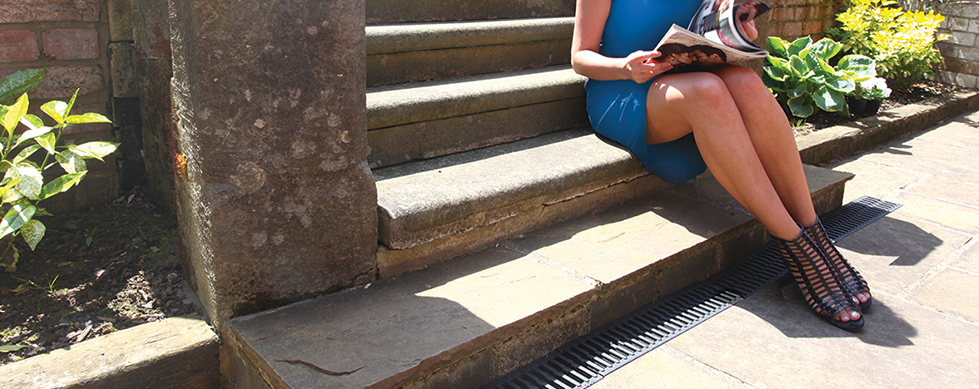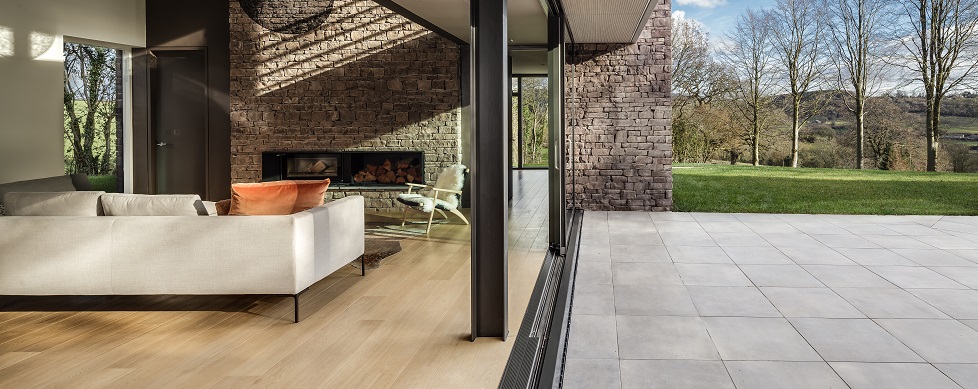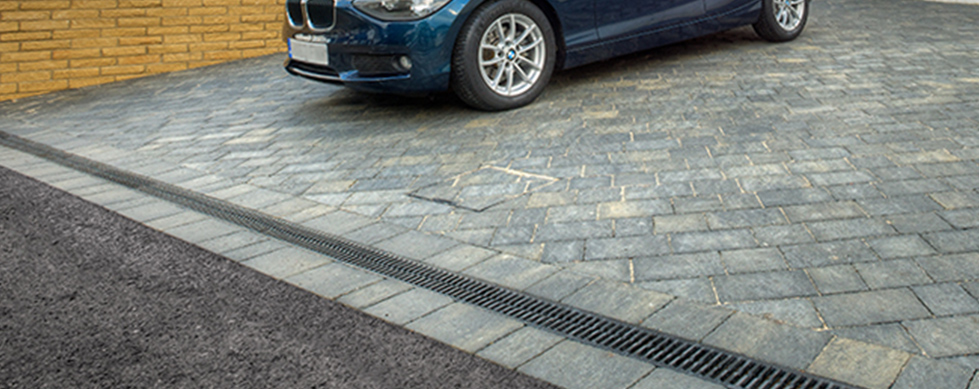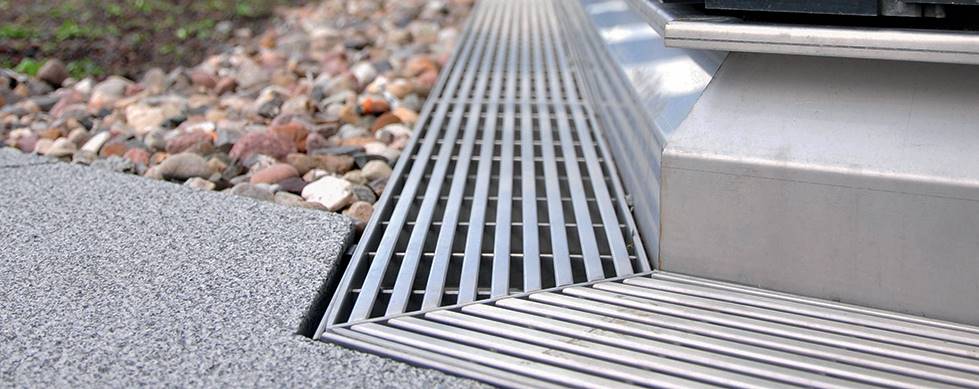
5 Key Considerations of Paving Drainage
Standing water in paved areas is not only an eye sore but it can also be a major safety hazard. Here, Neil Higgins, Product Training Manager at ACO Water Management, provides his top tips when considering drainage for paved areas.
1. Slopes are unnecessary
A common misconception is the belief that a slope is needed for water to drain effectively. However, this is not necessary. As long as the channel is laid flat and level, the water will be able to flow, providing the outlet is below the level of the channel.
Designing and constructing a slope when it is not needed uses up valuable time and resources throughout the process. By addressing this common belief, contractors can spend time on other important aspects of the project.

2. Designs need to be logical
The challenge I am often presented with is a design that is not feasible. For example, it is surprisingly not unusual to be given a design that includes an uphill slope for water to run along. Understandably, there are certain routes customers would prefer runoff travel along, but the logistics of making this happen must be thought out. Uphill runoff is not achievable and channels set up to re-route rainwater need to be either flat or slope downwards in the desired direction.
3. Access points allow easy maintenance
It is essential to ensure that the proper maintenance access for the drainage channel is implemented during any paving installation. As particles of dust and dirt collect over time, the build-up of silt is inevitable. To keep the channel running efficiently it needs to be cleared regularly, and to achieve this, access points and sump are ideal.
There are two main channel options for paving: gratings and Brickslot. Standard gratings can be simply lifted off the channel to allow access for cleaning and maintenance. On the other hand, Brickslot requires more thought as the only way to access the channel for maintenance is via the inclusion of dedicated access points, so it is essential that these units are included as part of the design.

4. Measuring depths and loads
To create a set up that works for paving, the channel for the runoff should be between 3 – 5mm lower than the surface area it is diverting water away from. This is the equivalent of a £1 coin placed face down on the surface of the channel and the surface area that is the source of the runoff being level with the top of the coin.
Additionally, the load class should be carefully considered. If the paving area will be exclusively used by pedestrians, such as in a back garden, then an A 15 solution can be used, however if it’s for a domestic driveway, a B 125 system should be the minimum classification considered (the exact will depend on the anticipated vehicular loads).

5. Completing the look
If the project requires bespoke decorative aggregates, it is important that the accompanying drainage enhances – rather than detracts from – the aesthetic appearance of the landscape being created.
ACO’s ‘Complete the Look’ range allows you to upgrade the grating to one with a premium alternative finish, with the most popular of these being the stainless-steel wedge wire grating.
Want to know more?
Visit our Patio Drainage page